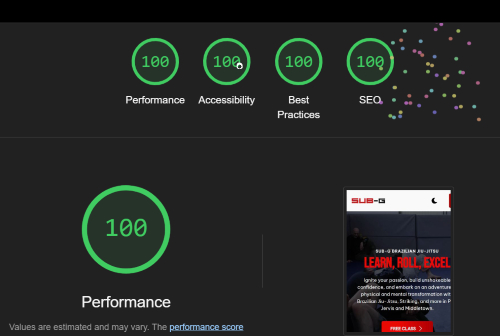
The Real Cost Of DIY Websites
When you think about how small businesses can make a website, there are probably a few key solutions that initially come to mind. WIX, WordPress, and GoDaddy are just a few of the superstars in the world of page-builders. Their simple drag-and-drop systems are easy for even a less tech-savvy individual to figure out. In just a few hours, any business can have a fully functioning website for customers to view.
Many of these page-builder sites like WIX and GoDaddy offer a freemium business model, allowing business owners to create a site and get a domain name completely for free. While these services do offer improved premium services, all the basics are covered in their free tiers. It seems like a no-brainer for many business owners to simply go the cheap route, spend a couple of hours building a site, and throw it on the web. Before you jump into building your own site, it’s important to understand the hidden trade-offs that can affect your business’s online performance and credibility. Let’s take a closer look at the real cost of DIY websites.
The Good
While DIY website builders are riddled with flaws and shortcomings, they certainly do have their uses and can be good in certain situations. For brand new businesses with very little capital, page-builders offer an extremely cheap, and sometimes even free, solution for a website. It’s no secret that having a website is vital to any business’s success, especially considering the prominence of both smartphones and Google. Platforms like WIX and GoDaddy help to provide up-and-coming small businesses with an almost equal opportunity to establish a web presence without the burden of paying a professional.
Many page-builders also offer a very streamlined and simple interface, often requiring no knowledge of coding or UI design. Their drag-and-drop functionality means that users don’t need to worry about the intricacies of HTML and CSS, nor making the site mobile-friendly. When coupled with their pre-built templates, these tools can be used to create a seemingly effective website in a relatively short amount of time.
The Bad
We’ve all heard some form of the quote “good work isn’t cheap and cheap work isn’t good.” at one point or another. It should come as no surprise that page-builders, although quite affordable and simple to use, tend to be hugely lacking in terms of quality. These platforms provide users with a simple drag-and-drop interface, cutting out the need for code entirely. However, this works to hide the bloated and bulky code that underlies the website. Platforms like WIX and GoDaddy often use unnecessary and overly complicated code to perform the simplest of tasks. And while the user sees the website coming together seemingly perfectly, at least visually, the website can look like an overcooked Turkey on Thanksgiving under the hood.
This can affect not only the load times of sites made with page builders but can also ultimately negatively impact the sites rankings on Google. As discussed in our previous blog post, website load times have a sizable impact on search engine rankings due to Google’s Core Vitals update. This means that slower loading times will reduce a website’s ability to move up search engine rankings, leaving your site at the bottom or on page two of Google. And keep in mind, most users won’t even look past the first three listings that come up on Google.
DIY websites also leave a lot to be desired in terms of design and on-page SEO (Search Engine Optimization). As a business owner, your job is to focus on what you do best. Web design and SEO are an entirely different full-time job that requires an equal amount of knowledge and skill. While DIY platforms provide an avenue to create a web presence for small businesses, they often lack the professionalism many customers are looking for. Understanding fundamental design principles and trends is absolutely vital in building a website that is eye-catching and conveys the right message. In terms of SEO, the structure of content, keywords, and pages on the site must be curated in a specific and deliberate manner. DIY websites create the illusion that anyone can slap together a high-quality website in a couple of hours and have it perform well on Google. If this were the case, every business owner would be flocking to GoDaddy, WIX, and WordPress in herds.
The Ugly
While DIY websites can be a quick fix, they come with serious long-term risks that can severely impact your business. The hidden costs of using these platforms extend beyond just money—DIY websites can damage your brand, credibility, and customer experience.
One of the most significant issues with page-builders is the frequent technical glitches and lack of scalability. DIY websites are built on templates that are often not equipped to handle growth. As your business expands, you might find that your site can’t keep up. Slow load times, poor mobile responsiveness, and even occasional site crashes can occur when a DIY platform is stretched beyond its limits. These issues not only frustrate customers but can also lead to lost sales and damaged trust.
Another ugly reality is the lack of control and ownership you have over your website. On platforms like WIX or GoDaddy, you’re renting space on their servers and are limited by their infrastructure. If the platform goes down or you want to switch to a new provider, migrating your site can be a nightmare. In worst-case scenarios, you may even lose content or face downtime during migration, both of which are highly damaging for SEO and user experience. Just a few weeks ago, many businesses experienced issues with their website due to an ongoing lawsuit between WordPress and WP Engine. Learn more about that here.
Lastly, there’s the issue of customer support. DIY platforms usually offer basic support options, but if something goes wrong, don’t expect quick or specialized help. Many business owners find themselves scrambling to fix issues on their own, leading to frustration and extended downtime—something that a professional web designer can easily avoid.
Conclusion
It takes a lot of work to create a website that looks good, has the right information in the right places, and performs well under the hood. This is a multifaceted job that requires knowledge of coding, SEO, and design principles. While DIY website options offer an affordable temporary solution to creating an online business presence, it’s often best to get the help of someone offering professional web design services. This will allow you the freedom to create something that truly represents the quality of your brand without reliance on shaky third parties.



